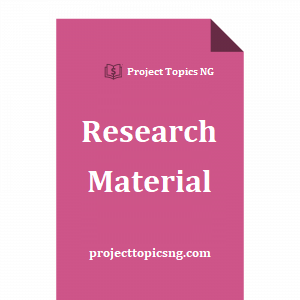Brief Introduction
Chapter 1 deals intensively with the obligation of the secondary school in helping to promote the full development of the individual morally, socially, intellectually, and its contribution to the well-being of the society in which he lives.
Furthermore, the term curriculum of secondary school has been designed to meet the desired objectives of secondary education as stated in the second national development plan. These aims are broadly stated as follows:-
- Preparations for useful living in the society
- Preparations for higher education
To achieve these aims a member of school subject has been introduced into the curriculums in paramount among these subject in economics. Economics is a very important and exciting subject it deals with the day-to-day activities of man. Knowledge of economics enables students to spend wisely so that resources at their disposal can be used to minimize their satisfaction.
Economics prepares students to contribute positively to the rapid economic development of the nation. It inculcates the spirit of inquiry so that students can base their decision on facts rather than more sentiment.
Table of Content
Title page
Approval page
Certification
Dedication
Acknowledgement
Table of contents
Abstract
Chapter One:
Introduction
1.1 Background of the study
1.2 Statement of the problem
1.3 Objectives of the study
1.4 Significance of the study
1.5 Research questions
1.6 Scope of the study
1.7 Limitations of the study
1.8 Definitions of terms
Chapter Two:
Literature Review
2.1 Theoretical background
2.2 Educational counseling services
2.3 Roles of teachers in guidance and counseling Services
2.4 Factors that contributes to the poor performance of the students in economics
2.5 Theories of effective teaching and studying Techniques
CHAPTER THREE:
RESEARCH METHODS
3.1 Research design
3.2 Area of the study
3.3 Population of the study
3.4 Sample size
3.5 Sampling techniques
3.6 Research instrument
3.7 Validity of the instrument
3.8 Methods of data collection
3.9 Method of data analysis
CHAPTER FOUR:
PRESENTATION AND ANALYSIS OF DATA
4.1 Analysis
CHAPTER FIVE: SUMMARY, OF FINDINGS CONCLUSION AND RECOMMENDATION
5.1Discussion of findings
5.2Summary of findings
5.3Conclusion
5.4Recommendations
Reference
Appendix


